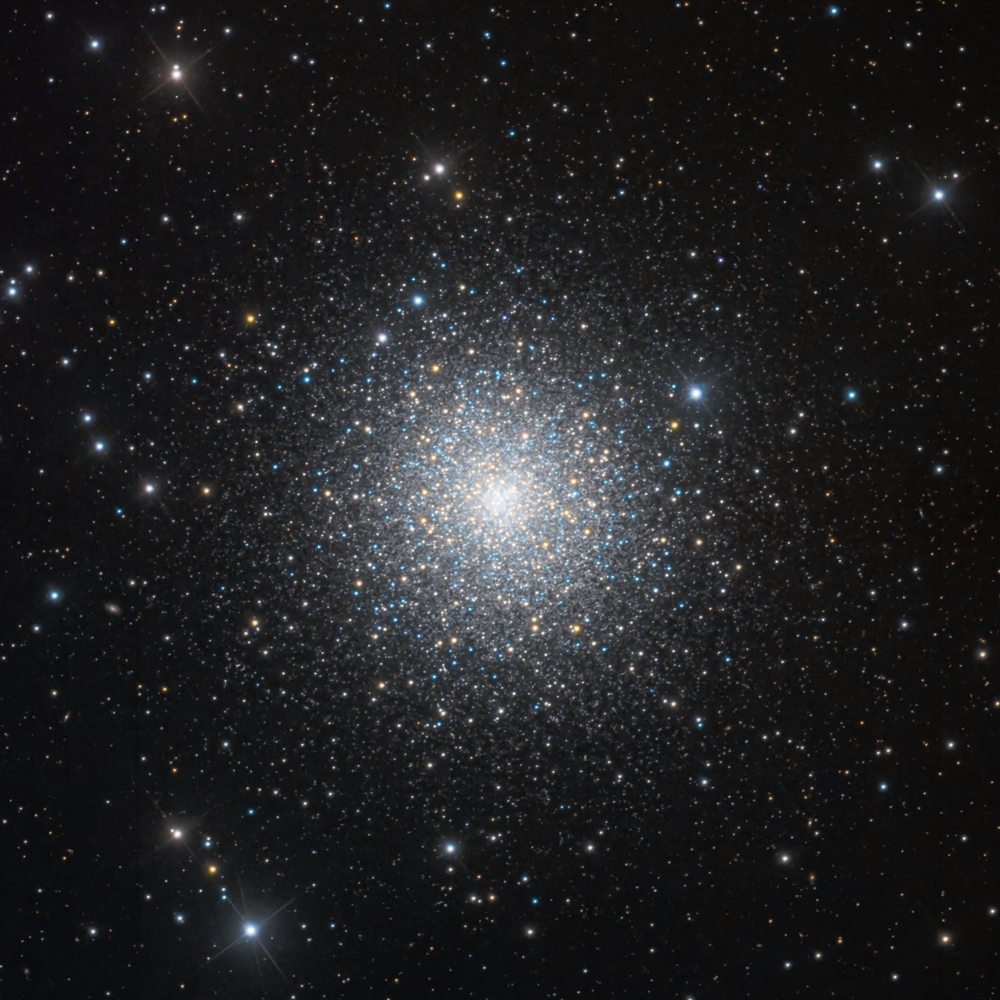

M2: A globular cluster is a group of ancient stars (M2 is thought to be about 13 billion years old; by comparison, our sun is about
4.6 billion years old; our galaxy is about 13.5 billion years old, and the universe is thought to be 13.8 billion years old), gravitationally bound to each other, orbiting the core of its
associated galaxy.
M2 is in an unusually unpopulated part of the sky; normally, a field I shoot is full of background galaxies, and there are relatively few in this field.
M2 is about 55,000 light years from Earth, and is about one-fifth of the angular size of the full moon when viewed from very dark skies; it is roughly 175 light years across. It shines at
magnitude 6.5 (barely visible with the naked eye in the darkest skies, but easily seen with binoculars). It contains about 150,000 stars (for comparison, there are estimated to be no more
than 2,000 stars within 50 light years of earth). M2 has a very faint tidal tail (not visible in my image), thought to be the result of an interaction with the Large Magellanic Cloud.
Copyright 2022, 2023 Mark de Regt